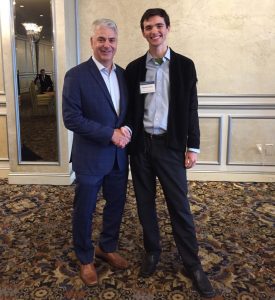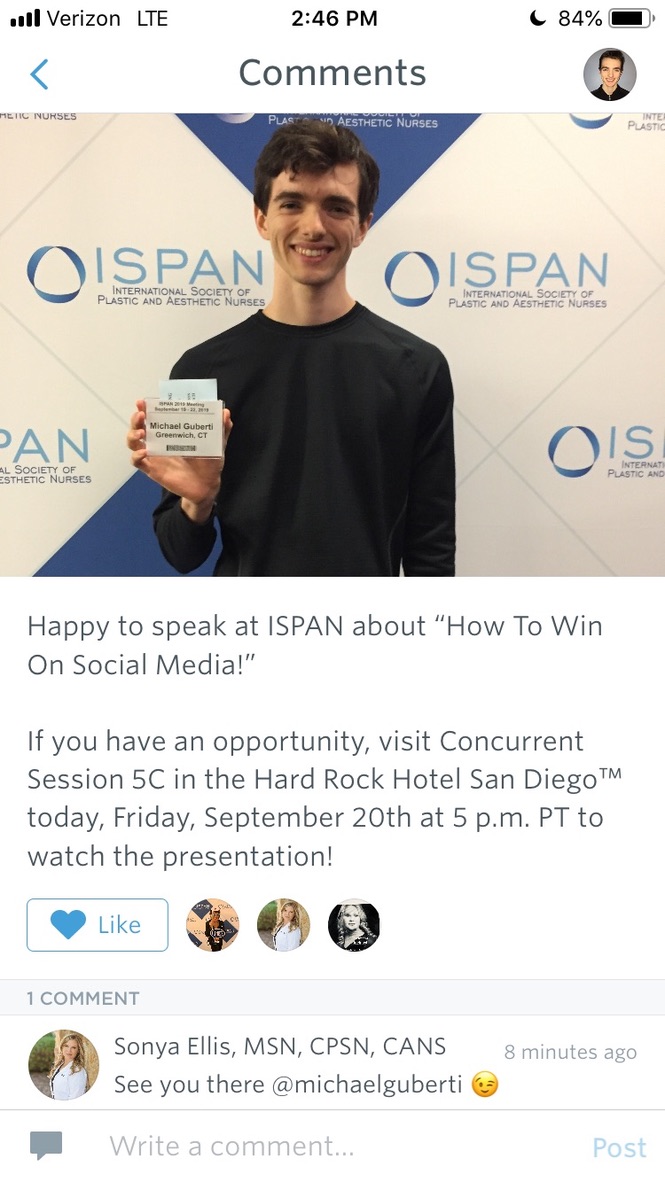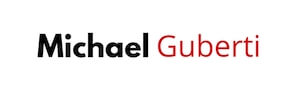Marketing under the microscope:
Why advertising is a make-or-break x-factor for business growth
Just like the human body has vital organs (the brain, heart, lungs, kidneys, and liver), there are vital components to a thriving business, one of which is the organization’s marketing strategy. One of my clients in the medical aesthetics industry mentioned to me, “from what I’ve learned about business, my advice to entrepreneurs is to get a good lawyer, a great accountant, and someone who knows what they are doing with marketing.”
Customers are essential for a business:
It has been said that once you get your first customer or make your first sale, you are in business. High-quality marketing can help you get more customers.
On the flip side, a lack of effective marketing can hurt an organization. According to the Small Business Administration, 65% of small businesses fail during the first 10 years. Investopedia reports that “poorly planned or executed marketing campaigns, or a lack of adequate marketing and publicity, are among the issues that drag down small businesses.”
Vital for business growth, yet often first on the chopping block:
Even though marketing is a key ingredient for business success, it is often the first on the chopping block during a recession. It has been reported that “during a recession, marketing tends to be viewed as a luxury rather than a necessity.” In 2009, the Harvard Business Review published an article called “How to Market in a Downturn” stating “during recessions, it’s more important than ever to remember that loyal customers are the primary, enduring source of cash flow and organic growth. Marketing isn’t optional – it’s a ‘good cost,’ essential to bringing in revenues from these key customers and others.”
Mindset plays a huge role:
In many ways, it depends on the mindset of the business owner. Do they see their marketing team and advertising budget as non-negotiables on their balance sheet, or do they see them as costs that need to be cut during tough times? The answer to that question can determine the path of the business. Let’s look at both scenarios.
Marketing under the microscope: the findings of a 20+ year study:
Ehrenberg-Bass Institute, a research organization, tracked companies and their marketing decisions for over two decades. They found that when businesses stop advertising altogether, their sales typically go down by 16% after one year, 25% after two years, and 36% after three years. For small businesses, the decision to stop advertising is especially damaging as the study reports that “small brands typically suffer greater declines than bigger brands.”
During a recession, when everyone is pulling back the reigns on their marketing, what happens if a business decides to push forward and strongly promote its brand? Marketing firm Ogilvy reports that “companies that marketed aggressively during the recession had 256% higher sales than those that did not continue to market.”
Online advertising is similar to an auction:
Consider the implications of businesses stopping their advertising on auction-based platforms like Facebook and Instagram. When your company and other businesses are running ads on Facebook or Instagram, you are in an auction. If other businesses stop advertising and leave the auction, and you decide to stay in the auction, your chances of reaching your desired audience increase because there is less competition.
Some medical aesthetics practices have wondered if they can spend the same amount on marketing for two years straight and make more revenue in the second year than the first year. One business owner put this idea to the test. As a result, she made $1,348,146 in 2018 and $1,298,977 in 2019, an approximate decrease of 3.64%. In summary, she could not expect to make more revenue without spending more on marketing. In future years, she increased her marketing budget and grew her revenue significantly.
Medical aesthetics practices benefit from a strong marketing budget and a commitment to advertising over the long term. According to research company McKinsey, the medical industry is expected to “grow by as much as 14% annually through 2026.” In the United States of America, the number of medical aesthetics practices has increased over time. There were 5,431 med spas in 2018, 7,430 in 2021, and 8,841 med spas in 2022. There are approximately 8,800 med spas currently in operation in America today.
Entrepreneurs in the medical aesthetics industry are curious about how to navigate the economic recession. In any economic environment, it is valuable to have a persistent, high-quality presence on platforms that your potential clients use. That way, you can reach people who are ready to invest in your service, as well as those who may not have the means at the time, but if their finances improve, they may think of your business first because they have seen your advertising consistently. You want to reach people who are ready to buy now as well as connect with potential future clients.
What does a high-quality marketing strategy cost?
Being that marketing is important for medical aesthetics practices, how much do they spend on their promotional strategy? A small business website can cost anywhere between $2,500 and $10,000 depending on the project's scope. Website maintenance costs range between $300 and $500 per month on average. For a comprehensive SEO strategy, a business should expect to pay between $750 to $2,000 per month according to Search Engine Journal. For comprehensive done-for-you advertising campaigns, you should budget between $1,500 to $10,000+ per month for an experienced marketing professional, and an additional $1,500 to $10,000+ per month in advertising budget paid to Instagram, Facebook, Google, and other platforms that your clients use.
Historically, the Small Business Administration in the United States of America stated that “small businesses with revenues less than $5 million should allocate 7% - 8% of their revenues to marketing.” The Small Business Administration published an updated report in 2019 stating that “B2C companies spent slightly more [than B2B companies] on average, with product companies spending 9.6% and B2C services companies spending 11.8% [of their revenue per year].” Other sources have suggested budgets ranging between 5% and as high as 25% depending on your goals. The Small Business Administration goes on to say that “if you think of marketing spending as eating into your profits, you’re thinking the wrong way. Marketing isn’t an expense - it’s an investment, one that drives your sales. Without marketing you won’t reach new potential customers, and that could mean lower sales.”
Bringing it all together:
In 2022, the average annual revenue for a medical aesthetics practice was $1,982,896, up from $1,722,551 in 2021 and $1,526,382 in 2018. Statistics suggest that interest is increasing both from potential clients looking for beauty services and aspiring medical entrepreneurs looking to start their own businesses. In the medical aesthetics industry, a high-performing marketing strategy is key for a thriving practice.
Want a marketing professional to promote your business and reach more potential clients? Schedule a discovery call with Michael to see if you are a good fit to work together: https://michaelguberti.com/work-with-michael-guberti-digital-marketing-strategist/
Digital marketing strategist Michael Guberti has witnessed the full lifecycle of med spas growth:
his clients starting them, scaling them, and even selling them.
His long-term clients successfully sold their practices from a position of financial strength after years of strategic growth.
Michael has been featured in the following media outlets:

What people are saying about Michael Guberti:
"“Michael Guberti is a Game Changer for DermAesthetics. We teamed up about eight years ago and never looked back. His depth of knowledge and consistent review of our online metrics relates directly into a more effective marketing expense and increased revenue year after year. Thank you Michael!”
Scott Tedder, CFO of DermAesthetics Anti-Aging, Laser and Medical Skin Care Center

"Thank you Michael. We appreciate everything you do for the office."
Dr. Comizio, founder of Comizio Orthodontics, top 1% of Invisalign provider offices in North America two years in a row.

“I have to give a shout-out to Michael Guberti. He is absolutely brilliant as our social media strategist.”
Lisa Topham, RN BSN

"Thank you! What would we do without you! You're the best!"
Anjie Cho, Architect and Feng Shui Expert

About Michael
Meet Michael Guberti, strategy and results-driven digital marketer with 10 years of experience building paid and organic marketing funnels for business-to-consumer and business-to-business clients.
Marketing efforts he has overseen have generated roughly $90 million dollars in lifetime revenue for his clients. He has managed and spent over a million dollars on online advertising campaigns.
Strategies that work for one business may not work for you. Michael doesn't put you into a one-size-fits-all, cookie-cutter template. He implement customized, high-value strategies that goes beyond just ads.
You’re not “just another client” to him, you’re a committed, ambitious entrepreneur and the heartbeat of the economy. He wants to use advertising to propel your business.
After all, advertising is his speciality.

Other activities:
 Michael enjoys promoting his client's philanthropic initiatives. His clients have raised:
Michael enjoys promoting his client's philanthropic initiatives. His clients have raised:
- Over $100,000 for the Special Operations Warrior Foundation, which provides college scholarships and educational counseling to the children of Special Operations personnel who have lost their lives serving our country.
- Over $3,000 for St. Jude Children's Research Hospital.
- $4,000 for Kenway's Cause, a dog and cat rescue nonprofit organization.
Michael and his brother Marc have a history of giving to others. The brothers started a 501c3 nonprofit called Guberti Giving to empower the next generation of leaders. For four years, they held in-person programs at Fordham University in the Bronx, New York. They sponsored students from the nearby areas and lower Westchester so they could attend and learn how to identify their passions, create products, promote themselves, and propel their careers. It was a personal and professional development program. The brothers were grateful to receive support from the New York Knicks, Nextiva phone company, and other organizations. The New York Knicks gave Michael and Marc the Sweetwater Clifton “City Spirit” Award during a Knicks game at Madison Square Garden.
